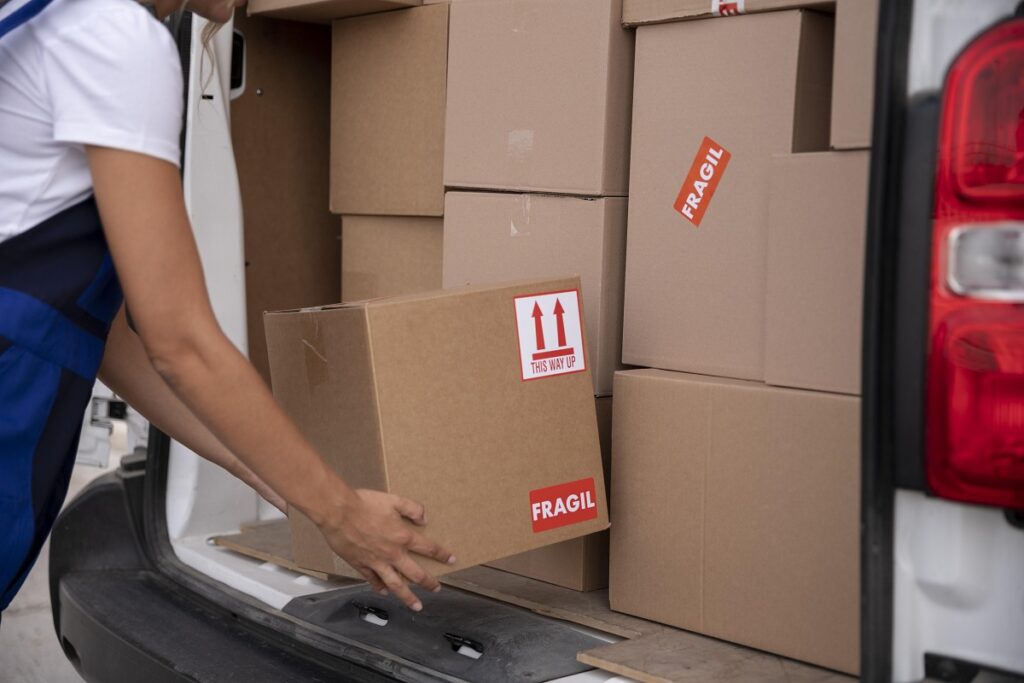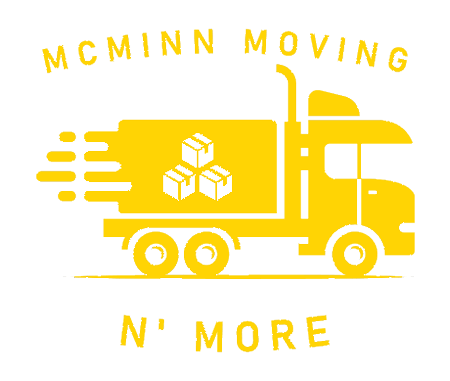Moving to a new home is always exciting, but it comes with its fair share of challenges. One of the biggest concerns for families and individuals is ensuring their delicate belongings make it to the new place safely. Whether it’s glassware, antiques, or electronics, fragile items require special care. With insights from moving professionals, this guide explores how to pack fragile items correctly, minimizing risks while keeping the process stress-free.
Why Packing Fragile Items Requires Extra Care
Not all household goods are created equal. While furniture and clothing can withstand a few bumps, glass, ceramics, and electronics are much more vulnerable. Without the right packing strategies, items may crack, chip, or break during transit. This can lead to emotional disappointment, especially when the damaged pieces carry sentimental or financial value.
Professional movers stress that fragile belongings should never be treated as an afterthought. By planning ahead and using the right supplies, families can safeguard their possessions and avoid costly replacements.

Essential Packing Supplies You’ll Need
Before getting into the techniques, gathering the right materials is crucial. Experts recommend:
- Sturdy moving boxes in multiple sizes
- Bubble wrap for cushioning
- Packing paper or unprinted newsprint
- Foam peanuts or inserts for added support
- Dish pack dividers for kitchenware
- Strong packing tape to secure boxes
- Permanent markers for clear labeling
These supplies create the foundation for safe packing. While it might seem like an extra expense, investing in high-quality materials often saves money by preventing breakage.
Step-by-Step Guide on How to Pack Fragile Items
1. Start with a Solid Base
Every box should begin with a cushion. Place a layer of crumpled packing paper or foam peanuts at the bottom before adding anything fragile. This step absorbs shock from bumps during transport.
2. Wrap Each Item Individually
Fragile belongings should never be packed without protection. Wrap glassware, plates, and decorative pieces in bubble wrap or packing paper. For oddly shaped items, use multiple layers until there are no exposed edges.
3. Use Dividers for Glasses and Dishes
Dish pack boxes or cardboard dividers provide excellent separation. They prevent items from clashing together and reduce the chance of chips or cracks.
4. Fill Empty Spaces
Any gaps in the box create opportunities for movement. After packing items, fill spaces with paper or foam to keep everything snug.
5. Seal and Label Boxes Clearly
Always use strong tape to secure the box bottom and top. Then, label the outside with “Fragile – Handle with Care.” Movers often prioritize carefully marked boxes, giving them extra attention during loading.
Common Mistakes People Make When Packing Fragile Items
Even with the best intentions, mistakes happen. Experts highlight a few frequent errors to avoid:
- Using weak or worn-out boxes that collapse easily
- Overpacking boxes, making them too heavy to carry safely
- Mixing fragile items with heavy objects like books
- Forgetting to cushion the bottom or fill empty gaps
- Not labeling boxes properly
Avoiding these pitfalls is just as important as following the right steps.
Packing Specific Fragile Items
Different items require slightly different techniques. Here’s how professionals handle some of the most common delicate belongings.
Glassware
Each glass should be wrapped in bubble wrap and placed upright in divided boxes. Extra padding at the top and bottom keeps them secure.
Plates and Bowls
Stack plates vertically rather than flat. Each piece should be separated with packing paper or bubble wrap. Bowls can be nested with padding between layers.
Electronics
Remove cords and accessories, then wrap each piece individually. If possible, use the original packaging. Otherwise, select a sturdy box with foam inserts.
Artwork and Mirrors
Flat pieces should be wrapped in protective paper and cardboard sheets, then packed upright. Corner protectors help prevent chipping.
Lamps and Light Fixtures
Disassemble parts when possible, wrapping each separately. Place shades in their own boxes with plenty of cushioning.
Professional Insights: Why Movers Do It Better
While anyone can learn how to pack fragile items, experienced movers bring efficiency and precision that comes with years of practice. Professional teams are trained to pack quickly without sacrificing safety, ensuring every piece is protected.
Many moving companies also provide insurance options, adding another layer of peace of mind. If an item does get damaged despite careful packing, insurance coverage can ease the financial burden.
When to Consider Residential Moving Services
For larger moves or households with numerous delicate belongings, hiring professionals can make a significant difference. With access to specialty boxes, trained staff, and efficient systems, Residential Moving Services offer both convenience and protection.
Homeowners who value their time often find that outsourcing this part of the move is more cost-effective than handling it themselves. Not only does it reduce stress, but it also lowers the risk of costly breakage.
DIY vs. Professional Packing: Which is Better?
Deciding whether to pack on your own or hire experts often depends on budget, time, and the value of your items. A DIY approach may save money upfront, but it requires careful planning, the right supplies, and a significant time commitment.
On the other hand, professional movers bring speed, expertise, and resources that streamline the entire process. For busy families, this option ensures fragile belongings are handled with the utmost care, reducing the likelihood of mishaps.
How to Stay Organized While Packing
Organization is key when preparing fragile items. Movers recommend packing room by room and keeping a detailed inventory list. This ensures that nothing gets misplaced and unpacking becomes easier.
Color-coded labels or numbered boxes also help track fragile belongings. This way, movers know exactly where to place each box upon arrival, saving time and effort on moving day.
Tips for Moving Day
Even the best-packed box can suffer damage if handled carelessly. On moving day:
- Communicate clearly with movers about fragile boxes
- Place delicate items last on the truck so they’re unloaded first
- Avoid stacking heavy boxes on top of fragile ones
- Keep essential fragile items, like heirlooms or electronics, with you if possible
These small precautions help ensure all belongings arrive safely.
How to Unpack Fragile Items Safely
The job isn’t done once the boxes arrive at the new home. Unpacking fragile belongings requires patience. Start with delicate items first so they don’t get crushed under heavier boxes. Unwrap each item carefully and check for damage immediately.
Placing fragile items in their designated spots early also prevents them from being accidentally knocked over during the rest of the move-in process.
The Emotional Value of Protecting Fragile Belongings
Fragile items aren’t just possessions—they often hold sentimental memories. A chipped heirloom or shattered photo frame can’t always be replaced. That’s why professionals emphasize not just the financial, but also the emotional value of careful packing.
Investing time and resources into proper packing safeguards memories, making the effort more than worthwhile.
Final Thoughts
Learning how to pack fragile items is about more than protecting belongings—it’s about ensuring peace of mind during a life-changing transition. With the right supplies, techniques, and a little expert guidance, anyone can safeguard their most delicate possessions.
For families who want extra assurance, partnering with trusted Residential Moving Services provides both convenience and confidence. Whether choosing a DIY approach or professional support, the key lies in preparation and attention to detail.
Frequently Asked Questions
1. What is the safest way to pack fragile items?
The safest way to pack fragile items is by wrapping each piece individually with bubble wrap or packing paper, placing them in sturdy boxes, and filling empty spaces with cushioning material. A solid base layer inside the box prevents impact damage. Always stack lighter items on top, seal the box securely, and label it clearly as “Fragile” so movers handle it with extra care.
2. How do professionals pack glassware for moving?
Professional movers pack glassware upright in divided boxes designed specifically for dishes and glasses. Each glass is wrapped in bubble wrap or unprinted packing paper, with extra padding placed at the bottom and sides of the box. This prevents contact between items and reduces the risk of chips or cracks during transit. The box is then clearly marked “Fragile” for added caution.
3. Should plates be packed flat or vertically?
Plates should always be packed vertically rather than stacked flat. When positioned on their sides with padding between each piece, plates are less likely to crack under pressure or sudden movements. Professional movers often use dish pack boxes with built-in dividers for extra security. Adding padding at the bottom and filling any gaps with paper helps minimize shifting during transport.
4. What packing materials work best for fragile items?
Bubble wrap and packing paper are the most effective materials for fragile belongings, as they cushion and protect against shock. Sturdy moving boxes, dish dividers, and foam inserts add additional support. For larger delicate items like artwork or electronics, specialty boxes are ideal. While newspaper is an option, it can leave ink stains, so unprinted paper or bubble wrap is generally preferred.
5. How do I pack electronics safely for a move?
To pack electronics safely, start by disconnecting cords and wrapping each device separately. If possible, use the original packaging with foam inserts. Otherwise, choose a sturdy box slightly larger than the item and fill gaps with padding. Wrap the electronics in anti-static bubble wrap for added protection. Clearly labeling the box with “Fragile” and “This Side Up” ensures proper handling during transport.
6. Is it worth hiring movers to pack fragile items?
Yes, hiring movers for fragile items can be worth it because professionals have the right materials and expertise to pack efficiently while reducing breakage risk. They also offer specialty boxes and insurance coverage, which adds an extra layer of protection. For households with many delicate possessions, using professional packing services saves time, prevents stress, and provides peace of mind during the moving process.
7. How do I prevent fragile items from shifting in boxes?
Prevent fragile items from shifting by filling every gap with crumpled packing paper, foam peanuts, or bubble wrap. Items should be snug but not forced into the box. Adding a base layer of cushioning and packing heavier pieces at the bottom helps stabilize the contents. Once filled, the box should not rattle when gently shaken, ensuring everything stays securely in place.
8. What’s the best way to pack lamps and lampshades?
Lamps should be disassembled before packing, with the base and shade wrapped separately. The lamp base is wrapped in bubble wrap and placed in a box lined with packing paper. Lampshades should go in their own box, padded with tissue paper to avoid crushing. Avoid using newspaper, as it can leave marks. Properly labeled boxes prevent accidental stacking and ensure safe delivery.
9. How should I label boxes with fragile items?
Boxes containing fragile items should be labeled clearly on multiple sides with the words “Fragile” and “Handle With Care.” Adding arrows or “This Side Up” signs helps movers place boxes in the correct position. Using color-coded labels or stickers can also distinguish delicate items from regular boxes, ensuring they receive the special attention they need throughout the moving process.
10. What should I unpack first after moving fragile items?
Fragile items should be unpacked first to prevent accidental damage during the chaos of settling in. Start with essentials like dishes, glassware, or electronics, and carefully unwrap each piece over a soft surface. Checking items immediately also allows you to file insurance claims if needed. Once delicate belongings are safely placed, you can focus on unpacking heavier or less vulnerable household goods.
